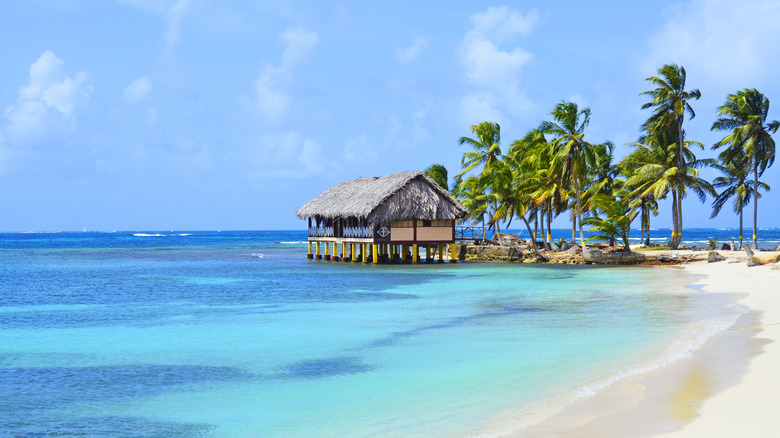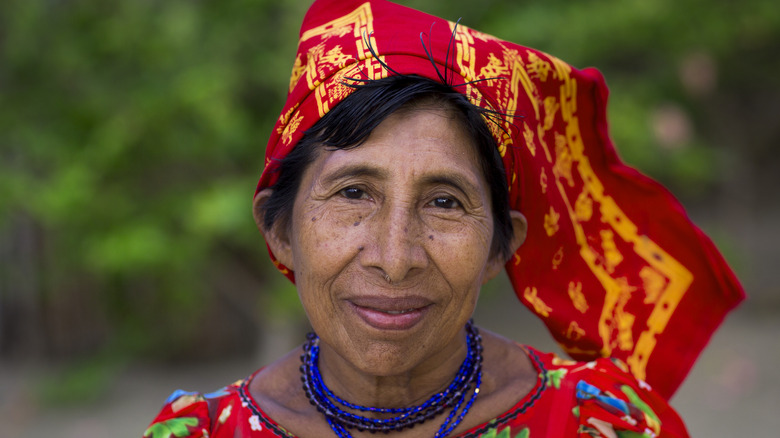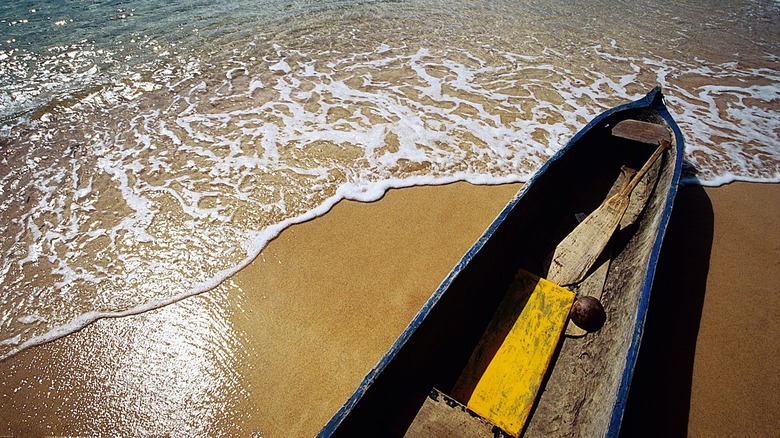Paddle Island To Island Through The Vibrant Waters Of This Central American Jungle
Known primarily for the canal that bears its name, there's much more to Panama than megaships carrying 22% of the world's seaborne containers between the two biggest oceans on earth. Situated between Costa Rica and Colombia, this narrow isthmus nation serves as the link between Central and South America. It's also becoming a hotspot for ecotourism, with misty mountains, wild rivers, jungles, lagoons, wetlands, scads of islands, and native groups still practicing traditional ways of life.
Panama's Caribbean coast is home to the Guna people, who inhabit a 140-mile strip of shoreline and islands known as Guna Yala. Formerly called San Blas, this semi-autonomous indigenous province is largely self-ruled and contains some of the country's most unspoiled scenery, with white sand beaches, picturesque inlets, turquoise waters, pristine coral reefs, and native villages dotted throughout.
While the Guna have long had contact with outsiders, tourist infrastructure is rudimentary, when it exists at all. It's very possible to visit Guna Yala these days, but accommodations are usually basic homestays or beach camping. There are almost no restaurants, so most meals are taken with local families. While lacking luxury, the communities among the islands and coast of Guna Yala afford visitors a chance to experience a people very much in touch with their surroundings and traditions, all within a thrilling, pristine tropical environment.
A proud, prosperous people
The Guna inhabit 49 of the more than 300 islands that make up the Guna Archipelago, which means most of the small isles are empty and ripe for exploration. With a population of around 62,000, the Guna have a history of self-sufficiency and fierce independence. Given their location at the crossroads of the Americas and the Caribbean, they've long been involved in regional trade. In 1925, they held a rebellion that made them the first autonomous indigenous group in Latin America.
These days, the Guna are famous for their vivid woven cloths known as molas, which are worn by women and sold as crafts. They are also known for their egalitarian cultural mores. While the Guna tend to have a traditional division of labor between men and women, no work is considered superior or to any other: weaving cloth or caring for children is just as important as fishing or hunting wild game, in their eyes.
They are also remarkably tolerant when it comes to sexual identity. In Guna culture, transgenderism is just a fact of life, in the form of Omeggid — boys who are feminine from an early age and grow up assuming female roles. This is accepted by the Guna as part of the natural state of things, which aligns them with many native American cultures where the idea of "two spirit" individuals blurs the strict binary lines of sexuality and gender traditionally accepted in Western thought.
What to do and how to do it
While remote by most standards, Guna Yala can be visited via a quick flight or three-hour 4x4 drive from Panama City to the town of Carti. From there, you can jump on a boat that will take you into the picturesque islands the Guna call home, where you can hop around according to how much time you can allow and how deep you wish to go.
Aside from just soaking up the splendor of the island's untouched country, activities in Guna Yula include swimming, snorkeling, birdwatching, paddleboarding, beach volleyball, and deep hammock-swinging. This all goes hand-in-hand with being a guest among a people who have called this special corner of the Americas home for generations.
While there are plenty of options to visit the area via motorized boat, perhaps the best way to explore Guna Yala is by sea kayak. Southern Sea Ventures offers week-long kayaking jaunts that take you into the heart of Guna territory, where you'll paddle up to 75 miles among the islands, quays, lagoons, and settlements that make this one of the most choice off-the-beaten-path adventures available in Central America today.


